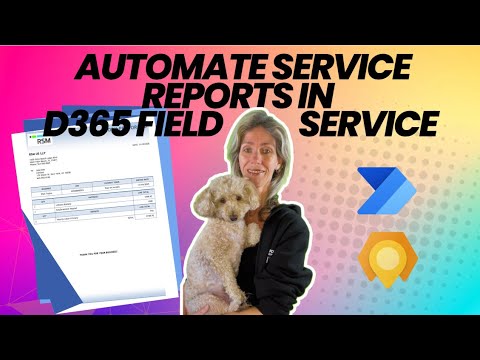Now Reading: Modernising Field Operations with Connected Field Service
-
01
Modernising Field Operations with Connected Field Service
Modernising Field Operations with Connected Field Service
 Mark ChristieDataverse, Dyn365CE, Dynamics 3652 weeks ago75 Views
Mark ChristieDataverse, Dyn365CE, Dynamics 3652 weeks ago75 Views
Modernising Field Operations with Connected Field Service
Ageing infrastructure, rising customer expectations, and the need to deliver services faster and more sustainably are forcing field organisations to rethink how their field teams work.
Connected Field Service, powered by Microsoft Dynamics 365, is transforming the way organisations manage assets, technicians, and service delivery.
We’ve explored how Connected Field Service modernises field operations and why businesses across utilities, energy, manufacturing, and service organisations are adopting it.
What Is Connected Field Service?
Connected Field Service (CFS) integrates IoT, asset data, scheduling tools, and automated workflows to provide a complete connected ecosystem. It alerts organisations to issues before customers are impacted, enabling fast, proactive service.
Instead of waiting for an asset to fail or a customer to report a problem, CFS uses sensors and telemetry to trigger automated workflows, from creating a work order to dispatching the right technician with the right tools.
How Connected Field Service Modernises Field Operations
1. Proactive and Predictive Maintenance
Traditional field service teams fix issues after something breaks. With connected Field Service you can flip this model.
Using IoT-enabled assets and real-time monitoring, you can:
-
Detect early warning signs
-
Trigger automated alerts
-
Schedule maintenance before failures
-
Reduce costly emergency callouts
-
Extend asset lifespan
Then you get fewer disruptions, lower maintenance costs, and much happier customers.
2. Smarter Scheduling and Dispatching
Sending the right technician with the right skills and tools can drastically improve fix rates.
CFS enhances dispatching by using:
-
Real-time technician availability
-
Skills-based matching
-
Automatic routing
-
Live updates from the field
This means shorter appointment windows, reduced travel time, and more efficient use of resources.
3. Empowered Field Technicians
Technicians spend less time searching for information and more time fixing.
With Connected Field Service, they get:
-
Full visibility of work orders
-
Step-by-step guides and asset history
-
Mobile access to manuals and diagrams
-
Real-time communication with support teams
-
Remote assistance using Microsoft Teams or Dynamics Remote Assist
This improves accuracy, safety, and confidence in the field.
4. Better Customer Experience
Customers increasingly expect transparency, speed, and accuracy.
Connected Field Service enables:
-
Automated appointment notifications
-
Accurate arrival times
-
Proactive communication
-
Higher first-time-fix rates
When issues are resolved faster (or prevented entirely) customer trust in you increases.
5. Centralised Data for Smarter Decisions
Field operations generate enormous amounts of data.
Connected Field Service brings all of this into a single ecosystem, making it easier to analyse:
-
Asset performance
-
Technician productivity
-
Service trends
-
Cost drivers
-
Predictive insights
With integrations into Microsoft Power BI, leaders gain clearer dashboards and reporting for strategic decision-making.
6. Sustainability and Reduced Carbon Impact
By reducing unnecessary callouts and enabling proactive maintenance:
-
Fewer truck rolls
-
Better route planning
-
Longer asset life
-
Reduced waste
-
Lower CO₂ emissions
For sectors like utilities and energy, it supports regulatory requirements and sustainability goals, while reducing operational costs.
Why Organisations Are Adopting Connected Field Service
Connected Field Service offers tangible, measurable impact across the board:
-
Up to 50% reduction in unplanned downtime
-
Up to 40% increase in first-time fix rates
-
Up to 20% reduction in fuel costs through better routing
-
Up to 30% faster service resolution times
It gives organisations the tools to become more efficient, more responsive, and far more competitive in an increasingly digital landscape.
As field operations evolve, Connected Field Service is becoming a vital component for organisations looking to modernise. You can move from reactive service to proactive, intelligent operations.
It’s about transforming the entire service model. If you’d like help implementing or optimising Connected Field Service, Proximo 3 can support your journey.
Contact us below to get started.
Check Yasmin Gray’s original post https://proximo3.com/modernising-field-operations-with-connected-field-service/ on proximo3.com which was published 2025-11-20 11:10:00
Finance & Operations8 months ago
D365 Performance Logs
Podcasts7 hours ago
The Azure Quantum Hybrid Fix
Finance & Operations8 months ago
D365 Performance Logs















